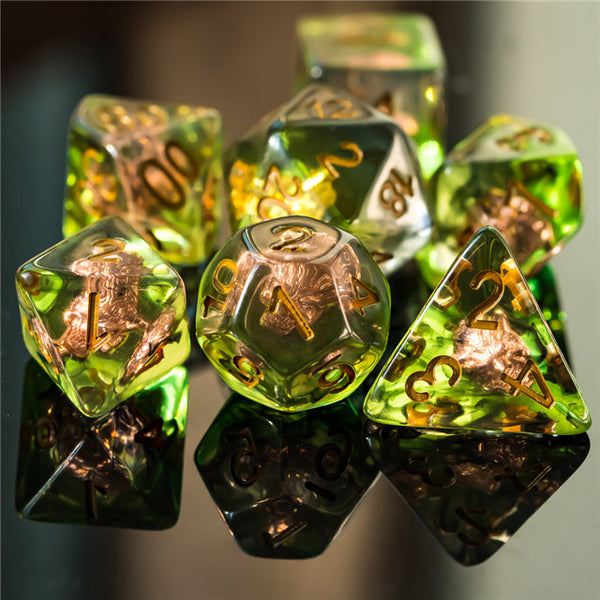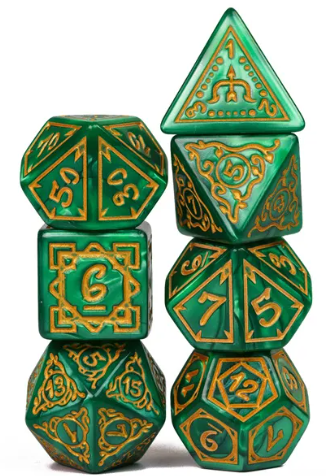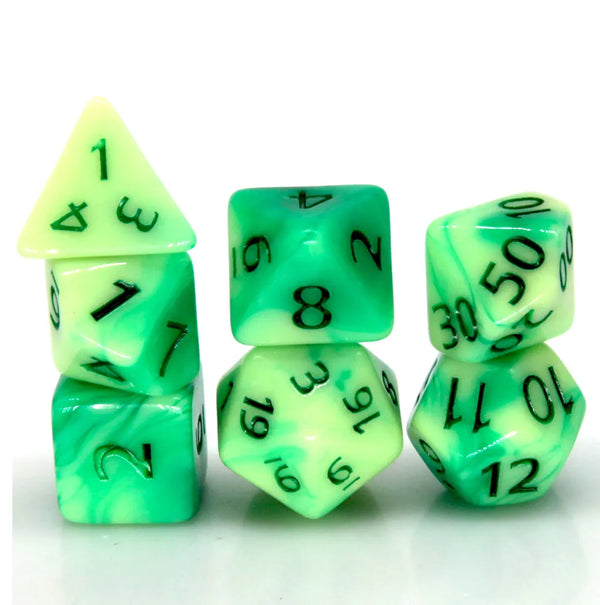Dungeons & Dragons, a game rich in lore, mechanics, and endless possibilities, has many intricate elements that cater to a range of player desires. Among the myriad of choices available to players, the Druid class stands out as an embodiment of nature, balance, and transformation. And, like all classes in D&D, Druids come with their own special hit dice— but what does that mean, and why is it important?
The Magic of a d8: Understanding Druid Hit Dice
Every class in D&D has its own type of hit die which represents the potential health gain as characters level up. For Druids, this hit die is a d8. This might seem like just a simple eight-sided die, but in the world of Dungeons & Dragons, it encapsulates the vitality and resilience of the Druid.
When a Druid gains a level, they roll this d8 and add their Constitution modifier. The result is the increase in hit points they receive for that level. The beauty of this mechanism is its blend of predictability and randomness; the d8 offers a moderate range of outcomes, with the Constitution modifier serving as a consistent bonus (or penalty, if it's negative).
More Than Just Health: The Short Rest Mechanic
The hit dice system in D&D is not just about gaining health as you level up. Come 5th Edition, hit dice also play a pivotal role during short rests. A short rest is typically an hour-long break that characters can take between encounters or tasks. During this time, they can "spend" one or more of their accumulated hit dice to heal.
For Druids, this means rolling their d8s, adding their Constitution modifier to each roll, and restoring the resulting hit points. The choice of how many dice to roll during a rest introduces an added layer of strategy, as players must weigh immediate recovery against potential needs later on.
Need more information on Druid hit dice?
What are Druid hit dice?
In Dungeons & Dragons (D&D), "hit dice" (often abbreviated as HD) are a way of determining a creature's or character's health, or more specifically, their hit points (HP). Each class in D&D has a specific type of hit die that represents how much health they gain as they level up.
For a Druid, the hit die is a d8. This means that when a Druid gains a level, they will roll a 8-sided die (d8) and add the result to their total hit points. Additionally, they add their Constitution modifier to this roll. If the Constitution modifier is positive, it represents a bonus to their hit points, while a negative modifier would reduce the hit points they gain. This process is repeated every time they level up.
For example, a level 1 Druid with a Constitution modifier of +2 would roll a d8 when they start out. If they roll a 5, they would add their Constitution modifier, for a total of 7 additional hit points for that level.
As characters level up, their total hit dice also indicate the potential pool they can use for healing during a short rest. During a short rest, characters can choose to "spend" one or more of their hit dice, rolling each die and adding their Constitution modifier to regain hit points. After spending hit dice in this manner, they'll need to take a long rest to regain half of the total number of hit dice they've spent.
Remember, the specifics can change slightly depending on which edition of D&D you're playing, so it's always a good idea to refer to the rulebook or player's handbook for your specific edition to get the exact details.
How many hit dice do druids get?
One!
Druid Dice in Context
When we look at the hit dice of various classes, the d8 of the Druid situates them between squishier classes like Wizards (d6) and hardier ones like Barbarians (d12). This placement is quite apt considering the Druid's versatility. Whether they're shape-shifting into a bear or casting a spell to heal their allies, Druids are adaptable, neither the most fragile nor the sturdiest.
Conclusion
The concept of Druid dice, while mechanically a way to determine health, carries with it the essence of the Druid class. The d8 is a symbol of balance—apt for a class that constantly seeks harmony in nature. Whether you're a seasoned player or a newbie looking to delve into the mystical world of D&D, understanding the nuances of hit dice and their significance can enhance your appreciation of the game. So, the next time your Druid sits by a campfire, taking a short rest amidst a dense, enchanted forest, imagine them channeling the power of their d8, embodying the resilience and adaptability that defines them.
Notice: Note that BrycesDice LLC may receive commissions on any affiliate links in this article. Purchases made here on BrycesDice.com are appreciate!




